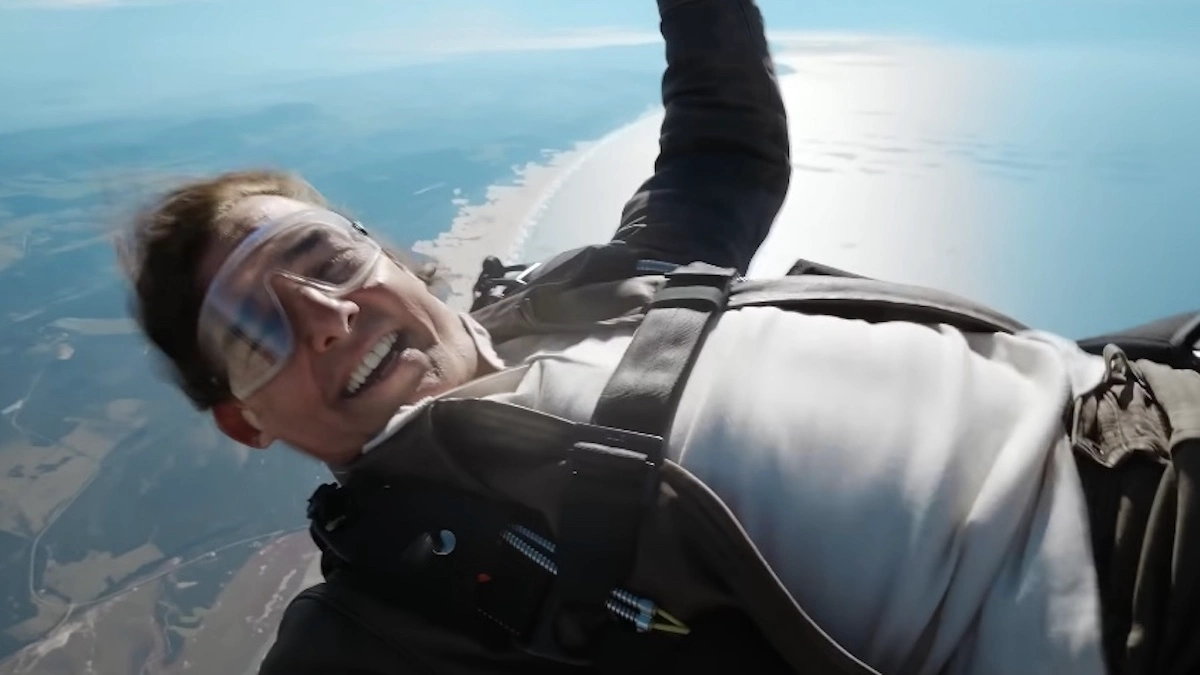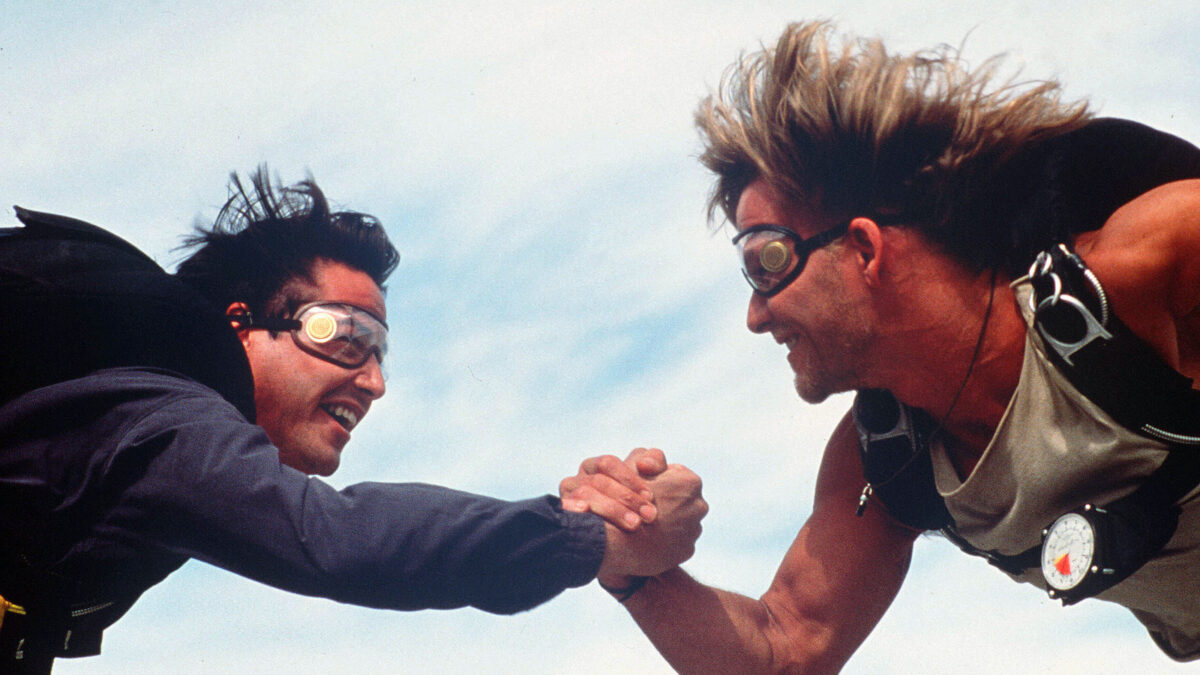How different is skydiving in the movies from skydiving in real life? Hmmm, it depends! While there are many parallels and actualities to the skydiving we see in theaters today, it hasn’t always been that way. This is due to advancements in cinematography, evolving technologies and techniques in the sport of skydiving, and a constantly growing understanding of mixing the two together to create something fantastically entertaining. Let’s jump into how some of the most celebrated skydiving scenes were shot and how they contrast with doing the real thing!

Can celebrities skydive?
Yes, movie stars, singers, and all types of performers can — and do — skydive! Skydiving can be seen as the great equalizer, hehe. Celebrities like Tom Cruise, Patrick Swayze, Michelle Rodriguez, and Will Smith (just for fun, not film), have all taken the leap from a perfectly good airplane. At the end of the day, we’re all the same, and if you meet the requirements to skydive, then you’re good to go!
How do people film skydiving scenes?
… With some pretty darn awesome videographers, that’s how! During a tandem skydive, the videographer has one or two cameras, accounts for the best lighting through orientation to the sun, and follows a moving object: the tandem pair.
All of this holds true for the videographers hired by Hollywood, too. The three major differences are: the number of cameras used will often be more than two; an unreal amount of stability is required; and they’ll be chasing a much more unpredictable object through the sky instead of a tandem pair who is falling in a classic belly-to-earth orientation.
Skydiving scenes in movies are difficult to effectively shoot, and that means they often need the help of the skydiving industry’s professional videographers! Too bad, so sad to the movie’s camera crew. While their skills may be sufficient on the ground, effectively shooting a scene while hurtling through the sky at terminal velocity is a different ball game. Skydiving scenes are filmed with multiple, highly-skilled individuals all contributing their expertise, an extensive amount of retakes, and loads of passion and patience to capture the perfect shot.
Mission: Impossible – Fallout
If you haven’t seen the epic Tom Cruise HALO jump from Mission: Impossible – Fallout, you’re missing out! In this action-packed thriller, Tom Cruise and crew embark on the journey of completing a HALO jump. What the heck does HALO mean? High altitude, low opening. HALO jumps are so high (typically around 30,000 feet) that they’re much more equipment-dependent than a typical skydive. These high-altitude skydives require tons of preparation and ground training; oxygen in the aircraft and through the jumpers’ helmets during freefall; and special weather-protective gear to stay warm — it’s pretty chilly up there!
Skydiving in movies such as this one requires creative minds to come together to ensure safe and functioning equipment while being viewer-friendly. Try to imagine Tom Cruise and his videographer, Craig O’Brien, during filming. Lights, camera, action? More like lights, camera, gear check, altitude awareness, action, pull, fly parachute, and land!
Training for a Hollywood Skydive
Movies that have skydiving scenes often don’t show the depth of the training that the character must pursue before jumping from a plane. Check out Tom Cruise talking about the intense training behind the skydiving and BASE jumping he did for his new film – he did 500+ jumps to nail it! Oftentimes, some scenes are simulated on the ground, which requires much less training than a real skydive. It’s nothing like in Fandango…

Point Break Skydive
The Point Break skydiving scene, along with the one from Deadpool 2 (yeesh!) is a bit less realistic than the one from Mission Impossible — the freefall lasts for nearly 90 seconds after jumping from about 4,000 feet! In the skydiving world, jumping from this low altitude is called a hop ‘n pop, meaning you jump out and almost immediately deploy your parachute. These fun jumps are typically used to hone in on canopy work, not freefall skills like in the movie – there wouldn’t be time! As for skydiving without a rig on your back, you can forget about it!
Fun fact: Patrick Swayze actually did skydive in Point Break. It took multiple jumps to achieve the perfect scene.
Can You Talk During Freefall?
The only person cool enough to have a chat during freefall is Tom Cruise. Only kidding, he’s able to talk it up in this video because: 1) he’s screaming, 2) the camera is very close to him, 3) his back is to the relative wind (protecting his face), and most notably, 4) he’s not quite falling at terminal velocity. When you jump from a slower-moving object, like a helicopter or hot air balloon, it takes a little bit for gravity to catch up and enter you into terminal velocity, rather than jumping from an airplane that is already moving forward at high speed.
You probably won’t look like a movie star on your next skydive, but you will be having a blast! (Tip: to minimize skin flappage, smile!) We can’t wait to see you strutting your stuff like the superstar you are — book now! Please reach out to us with any questions or concerns and check out our commonly asked questions. Blue skies!





